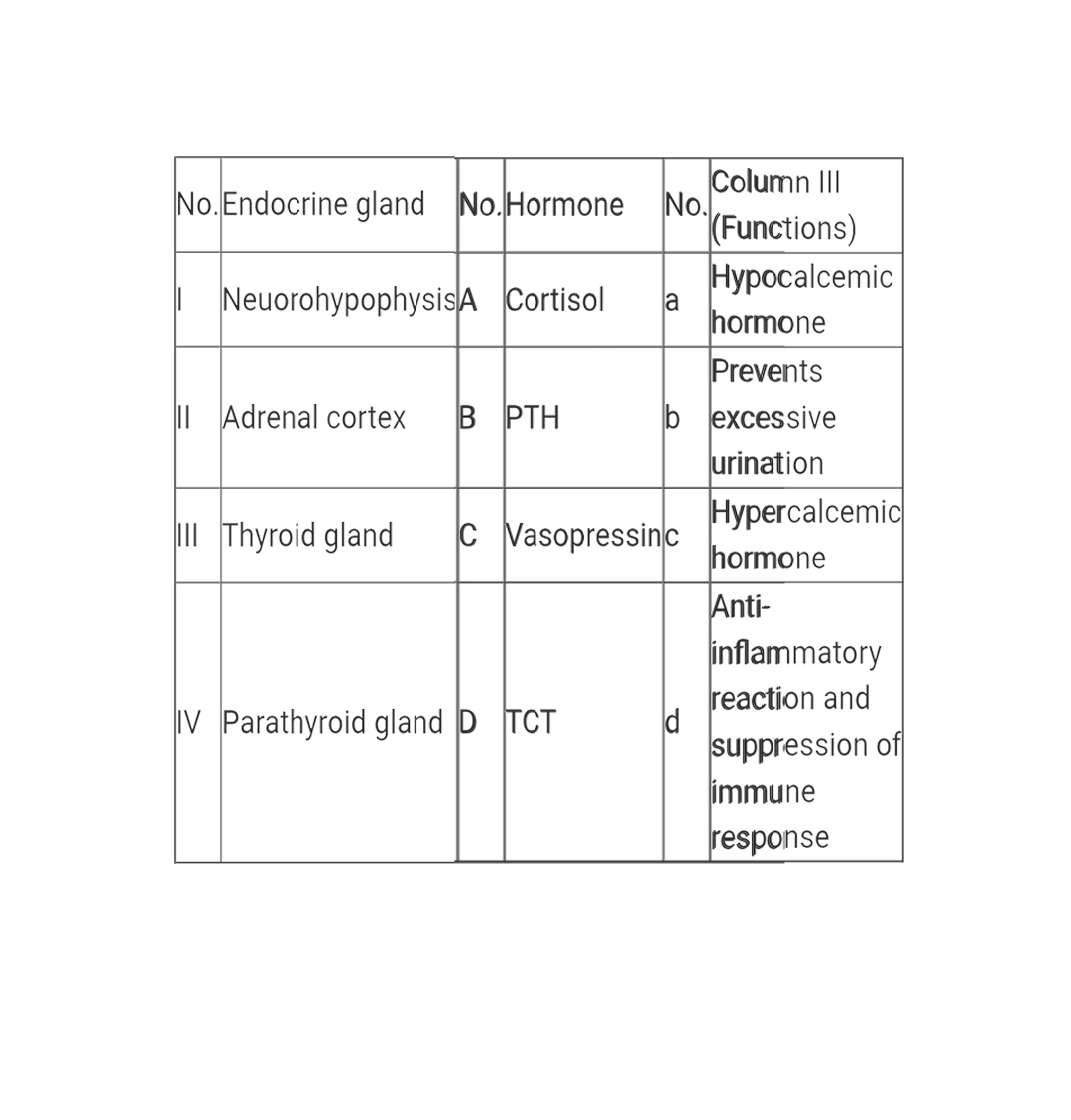Mention the function performed by
(i) Scale leaf of onion (ii) axillary bud of cucumber (iii) Tap root of beet.
To answer the question regarding the functions performed by the scale leaf of onion, the axillary bud of cucumber, and the tap root of beet, we can break it down into three parts:
Step 1: Function of Scale Leaf of Onion
- The scale leaves of an onion are modified leaves that primarily serve the function of protection. They cover and protect the inner parts of the bulb from external damage and desiccation (drying out). Additionally, they provide coverage to the bulb, helping to retain moisture.
Step 2: Function of Axillary Bud of Cucumber
- The axillary bud in cucumber is modified to form a tendril. Tendrils are specialized structures that help the plant to climb and support itself by wrapping around nearby objects. This adaptation allows the cucumber plant to reach for sunlight and grow more effectively in its environment.
Step 3: Function of Tap Root of Beet
- The tap root of beet serves primarily as a storage organ. It stores food materials, particularly sugars, which are produced during photosynthesis. This storage function is crucial for the plant's survival, especially during periods when photosynthesis is not occurring, such as during the winter months.
Summary of Functions:
1. Scale Leaf of Onion: Provides protection and coverage.
2. Axillary Bud of Cucumber: Modified to form a tendril for climbing support.
3. Tap Root of Beet: Functions as a storage organ for food materials.
---
- The scale leaves of an onion are modified leaves that primarily serve the function of protection. They cover and protect the inner parts of the bulb from external damage and desiccation (drying out). Additionally, they provide coverage to the bulb, helping to retain moisture.
- The axillary bud in cucumber is modified to form a tendril. Tendrils are specialized structures that help the plant to climb and support itself by wrapping around nearby objects. This adaptation allows the cucumber plant to reach for sunlight and grow more effectively in its environment.
- The tap root of beet serves primarily as a storage organ. It stores food materials, particularly sugars, which are produced during photosynthesis. This storage function is crucial for the plant's survival, especially during periods when photosynthesis is not occurring, such as during the winter months.
1. Scale Leaf of Onion: Provides protection and coverage.
2. Axillary Bud of Cucumber: Modified to form a tendril for climbing support.
3. Tap Root of Beet: Functions as a storage organ for food materials.
Topper's Solved these Questions
- BOOK - PRADEEPCHAPTER - MORPHOLOGY OF FLOWERING PLANTSEXERCISE - ADDITIONAL QUESTIONS (LONG ANSWER QUESTIONS)15videos
MORPHOLOGY OF FLOWERING PLANTS
- BOOK - PRADEEPCHAPTER - MORPHOLOGY OF FLOWERING PLANTSEXERCISE - ANALYTICAL (QUESTIONS WITH ANSWERS)20videos
MORPHOLOGY OF FLOWERING PLANTS
- BOOK - PRADEEPCHAPTER - MORPHOLOGY OF FLOWERING PLANTSEXERCISE - ADDITIONAL QUESTIONS (VERY SHORT ANSWER QUESTIONS)36videos
MORPHOLOGY OF FLOWERING PLANTS
- BOOK - PRADEEPCHAPTER - MINERALNUTRITIONEXERCISE - PRACTICE QUESTIONS (ASSERTION-REASON)21videos
MINERALNUTRITION
- BOOK - PRADEEPCHAPTER - NEURAL CONTROL AND CORRDINATIONEXERCISE - Practive Question (Assertion-Reason Type Question)17videos
NEURAL CONTROL AND CORRDINATION
Similar Questions
Knowledge Check
- Question 1 - Select One
Functions performed by modified axillary bud in Dioscorea, Bougainvillea and Cucurbita respectively are
AVegetative propagation, protection, climbingBPhotosynthesis, mechanical support, climbingCSexual reproduction, climbing, vegetative propagationDVegetative reproduction, photosynthesis, sexual reproduction - Question 2 - Select One
What are chromosome number in thhe following respectively (i) Synergid of Gossypium (ii) Leaf cells in Allium (iii) Endosperm of Saccharum
A48, 16, 36B52, 26, 32C26, 16, 120D48, 96, 24. - Question 3 - Select One
What is common to the changes mentioned below:
(i) Setting of milk into curd
(ii) Rusting of iron
(iii) Ripening of a mango?AThey are all reversible.BThey are slow irreversible changes.CThey are slow reversible changes.DThey are fast reversible changes.
Mention the chemical formulae of
(i) Phosgene
(ii) tear gas and
(iii) chloroformView SolutionMention the important uses of
(i) Bakelite (ii) Nylon-6 (iii) PVC (iv) Nylon 6, 6.View SolutionMatch the endocrine glands gives in column I with their respective hormones in column II and the functions performed by those hormones in column III and select the hormones in column III and select the correct option from the codes given below.
 View Solution
View SolutionMention the product and its use produced by each of the microbes listed below:
(i) Streptococcus. (ii) Lactobacillus. (iii) Saccharomyces Cerevisiae.View SolutionMention one use each of the following drugs :
(i) Ranitidine
(ii) Paracetamol
(iii) Tincture of iodineView Solution

